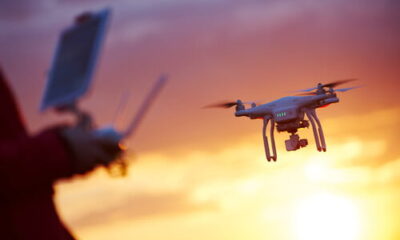

Economy
Existing city infrastructure can be ‘reprogrammed’
To unlock the full potential of our cities and solve pressing problems, we must re-imagine the existing urban infrastructure, says Scott Burnham.
Across the world, innovative solutions to urban needs are emerging from new uses for existing structures and systems. Officials are joining hands with engineers and corporate research and development teams to improve access to essential resources like water, energy and sunlight, and increase social and environmental wellbeing, by reimagining the potential of the resources they already have. They are reprogramming the city.
Take Lima. For those living on the edges of Peru’s capital, access to clean drinking water is a problem. Small wells supply most of the water, which one resident describes as “unpleasant and polluted”, and in the summer “there isn’t much available”.
Engineers at the local University of Engineering and Technology (UTEC) decided to tackle the issue by making innovative use of two of the city’s more abundant resources: its humid air (which can reach 98% humidity), and the billboards that reach into it. They installed a humidity collector and water purifier into the top of one advertising structure in the village of Bujama, creating the UTEC Water Billboard. It can produce 96 litres of clean drinking water a day for local residents, which flows down a pipe to a tap at the base of the structure.
Resident Francisco Quilca says it has provided him and his neighbors with a new, pure water source, and wishes it could exist “on the door of every house, in every village.”
Funded through the college’s Ingenuity in Action initiative, the project aims to inspire children in the area to pursue engineering studies at the college, exploring alternative approaches to urban infrastructure. Nader Tubbeh, digital marketing co-ordinator at UTEC, hopes that, by perfecting such innovations, young engineers could “help undermine the water crisis currently affecting the world”.
Seven thousand miles away, the residents of Umea, a city 300 miles north of Stockholm in Sweden, spend six months each year with little access to another precious natural resource: sunlight. This can take its toll on the mental and physical health of the population. What the city does have, however, is plenty of busses and bus stops – popular winter destinations for people seeking shelter from the elements…
Local energy company, Umea Energi, saw an opportunity in the intersection of the need for sunlight and for shelter. It replaced the lights in the shells of 30 bus stops around the city with UV light therapy tubes powered by solar energy, transforming the bus stops into “therapy saloons… to give the people of Umea an extra energy boost when they needed it the most”, as the company said in a video about the project. While waiting for the bus, residents are invited to face the lights for a few minutes to soak up the equivalent of natural sunlight rays before continuing on their journey. After the installation of the light therapy bulbs, the use of public buses in Umea increased by 50%.
The motorways in and around Los Angeles may not seem like the most fertile ground for this kind of urban repurposing, but for artist Stephen Glassman, they have a unique potential. Glassman is the creator of Urban Air, a project that aims to replace the advertisements atop the structures that line and extend over some of America’s most polluted roadways with miniature bamboo forests to cool and clean the air. The project, explains Glassman, “recontextualises what we’ve seen to this point as a blight of advertising”. Instead, these sites become “an infrastructure for service and interconnectivity”.
Time is a great decider of what stays and what disappears from the urban landscape. As technology and social behaviour changes, so do the physical elements of the city. Changing media habits led to the disappearance of newspaper boxes. Phonebooths and emergency call sites have given way to the mobile phone – but these skeletal structures offer a space for innovation, bringing new social and economic value. With the rise of the Internet of Things – in which everyday objects are embedded with sensors and wifi-enabled – there’s no end to the potential of urban objects to network and exchange data.
In New York, a partnership between the city and two telecommunications companies, Cisco and City 24/7, has seen 250 phone boxes repurposed as information point touchscreens. The business model replaces advertising for coins: a person might tap on the screen to find the way to the nearest park, and also be alerted to a few offers from local shops and restaurants, which can be stored on their smartphone. The information points can also act as communication tools during emergencies. If this pilot is successful, all of the city’s 12,500 payphones could be replaced. In Vienna, Telekom Austria has found another use for hundreds of its disused phone booths – by converting them into electric car charging stations. Drivers have the option to pay from their phone via SMS.
Parking payment machines are next on the list of ‘endangered’ structures, ripe for reprogramming. These iron sentinels are rapidly being replaced by smartphone apps that allow GPS location-specific payments. Yet look inside any parking payment machine and you will find a networked wifi system, a computer, printer, GPS locator and a payment authorization system – all powered by a solar system and storage battery. That’s a tremendous amount of capability that could be used for more than just issuing us with bits of time on pieces of paper.
City Tickets, by designer Mayo Nissen, is one idea that seeks to expand the functionality of parking pay machines. Earlier this year, at the Boston Society of Architects BSA Space Gallery, Nissen demonstrated a prototype of a Boston parking payment machine, reprogrammed to connect to the city’s 311 incident reporting system, creating a street-level communication platform between residents and the city hall. Residents can now pay for their parking and print out a list of all the faults or incidents reported in the area – potholes, broken streetlights – as well as a report from the city authorities detailing how they are responding to each issue, making governance more transparent. A separate ticket, which allows residents to report incidents in the area or offer suggestions for improvements – perhaps benches for sitting on, or a weekly local market, can also be printed.
Back in New York, numerous scaffolding structures, aka ‘sidewalk sheds’, can be left standing for years – the result of a local law that requires regular inspection of building facades. The law states that the structures must be erected for the inspection, but it doesn’t clarify when they must come down. Brooklyn designers Bland Hoke and Howard Chambers saw an opportunity to rethink these structures, having been inspired by the way the city was rethinking its streets. “We recognised how New York City streetscapes were changing with the addition of chairs and tables, and how the city was turning streets into pedestrian plazas”, says Hoke, “so we took that concept and grafted it onto sidewalk sheds.”
The result was Softwalks, a kit of seats, benches, counter tops and planters that bolt onto existing scaffolding structures to transform them into spaces for social gatherings or personal relaxation. The various elements that make up Softwalks, says Hoke, “are very pragmatic additions to these otherwise mundane structures, but the impact they’ve had so far is pretty tremendous in terms of how people react to them. Everyone loves it, because you are transforming a eyesore into a community asset.”
This citizen-led transformation of scaffolding structures into platforms for public events, street trading or pop-up dining could be a model for more public engagement with existing urban structures. It could even encourage the authorities to add a new chapter to the New York City Street Design Manual to nurture these interactions.
At present, this fairly standard municipal catalogue offers few surprises in its detailing of the “policies and design guidelines…for the improvement of streets and sidewalks throughout the five boroughs”. Yet deep within the guide is a section titled Infrastructure: Do It Yourself Repairs, complete with Specifications for Residents Installing their Own Sidewalk, and guidelines for Sidewalk Maintenance and Repair by the public. The notion of DIY Infrastructure Repair begs the question: if residents are encouraged to install and repair their own sidewalks (within certain guidelines), what other pieces of urban infrastructure could be opened up by the city within a framework of repair and improvement?
Cities are celebrated as terrains of infinite possibility – a perspective mostly applied to their human potential, but also true of the structures, systems and services that underpin urban lives. But cities also face tough challenges: from population growth and congestion, to emissions targets and economic competition. As existing resources come under pressure, there will be rewards for innovators who can stretch their applications in new directions.
Scott Burnham has created and directed design and urban initiatives in major cities worldwide, including Boston’s Reprogramming the City exhibition. This article originally appeared in Green Futures, the leading magazine on environmental solutions and sustainable futures published by Forum for the Future.
Further reading:
Our future cities will have to be smarter and more resilient
Green versus grey infrastructure
We need expert problem-solvers to build the cities of the future
Saving the Earth with sustainable cities: infographic analysis


 Environment10 months ago
Environment10 months agoAre Polymer Banknotes: an Eco-Friendly Trend or a Groundswell?

 Environment12 months ago
Environment12 months agoEco-Friendly Home Improvements: Top 7 Upgrades for 2025

 Features9 months ago
Features9 months agoEco-Friendly Cryptocurrencies: Sustainable Investment Choices

 Features10 months ago
Features10 months agoEco-Friendly Crypto Traders Must Find the Right Exchange





























